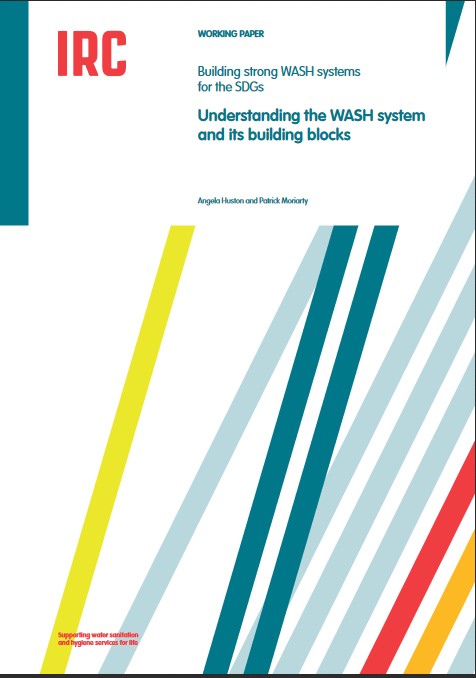Building strong WASH systems for the SDGs : Understanding the WASH system and its building blocks
 |
manual Jun 2018 ; 40 páginas
Aut. Patrick Moriarty
Ed. IRC - Den Haag
Formato descargable: PdF
Descargable desde el editor
Un editor presentación
Résumé:
Cet article présente un ensemble de neuf éléments constitutifs des systčmes WASH destinés ŕ réduire la complexité ŕ un niveau gérable, permettant et soutenant l'action. En évaluant l'état de chacune des composantes de base et des liens entre elles, les praticiens WASH peuvent identifier les points faibles et cibler leurs interventions pour un meilleur effet. Abstract:
This article presents a set of nine components of WASH systems designed to reduce complexity to a manageable level, enabling and supporting action. By assessing the state of each of the building blocks and the links between them, WASH practitioners can identify weaknesses and target their interventions for better impact Contents:
Contents
Abbreviations
Glossary
Executive summary
1. Introduction
1.1. Objectives, scope and audience
1.2. Structure of the paper
1.3. Background to IRC’s WASH systems praxis
2. Systems approaches and WASH
2.1. Complex adaptive systems
2.2. Leverage points and outcomes
2.3. Actors and factors
2.4. Boundaries and scale
2.5. Systems for WASH service delivery
2.6. The concept of building blocks
2.7. The WASH system in context
3. The nine building blocks, defined
3.1. Institutions
3.2. Policy and legislation
3.3. Finance
3.4. Regulation and accountability
3.5. Monitoring
3.6. Planning
3.7. Infrastructure
3.8. Water resource management
3.9. Learning and adaptation
4. Applying the building blocks
5. Next steps
6. References and resources
6.1. Literature cited
6.2. Tools and references, by building block
Palabras claves: |
construccione hidráulica (CI) (DT) (HP) (ope) , ODS Objetivos de Desarrollo Sostenible (CI) (DT) (HP) (ope) |
Editor/Difusor: |
|
IRC - Den Haag - Países Bajos |
Si hay un enlace roto, estaremos encantados de recibir un mensaje: communication@pseau.org